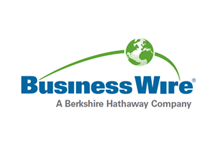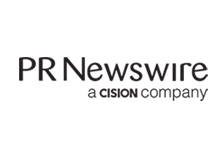Global Ultraviolet Curing System Market Research Report - Industry Size, Share analysis and Demand Forecast to 2024 - ResearchAndMarkets.com
The "Ultraviolet Curing System Market Research Report: By Type, Technology, Pressure, Application, End - User, Geographical Outlook - Global Industry Size, Share analysis and Demand Forecast to 2024" report has been added to ResearchAndMarkets.com's offering.
From valuing $1.4 billion in 2018, the global ultraviolet curing system market is projected to grow to $2.4 billion by 2024, registering an 8.8% CAGR during the forecast period (2019-2024).
On the basis of technology, the highest revenue share of more than 65.0% in the UV curing system market in 2018 was held by conventional UV. Owing to the various advantages, such as the ability to cure different substrates and produce a range of UV bandwidths for deep-level curing, conventional UV witnessed the highest demand.
The largest share in the uv curing system market in 2018 was held by the conveyer curing type category. During the forecast period, it is also expected to be the fastest-growing category, among other types.
One of the major factors supporting the growth of the ultraviolet curing system market is the rising usage of UV curing technologies for packaging applications. In recent years, the food & beverage industry has witnessed impressive growth due to numerous reasons, such as the flourishing e-commerce industry, increasing disposable income, rapid urbanization, and rising population.
In a report published by European Commission, in 2017, in the European market, over 95% of the food sold was packaged. As the safety of packaged food is of extreme importance, UV curing systems are considered ideal for adhesive, coating, and printing applications in the food industry due to their safe nature.
One of the key trends in the UV curing system market is the rising adoption of the UV LED technology in the production of consumer electronics. Compared to conventional UV, LED based UV offers several benefits, such as reduced operational cost, lower power consumption, and faster curing, making it the more preferred technology in the market. In addition to the above factors, UV LED systems offer target curing, which has led to their high adoption in the manufacturing of consumer electronics, such as tablets, TVs, and mobile phones.
Key Topics Covered:
Chapter 1. Research Background
Chapter 2. Research Methodology
Chapter 3. Executive Summary
Chapter 4. Introduction
4.1 Definition of Market Segments
4.1.1 By Type
4.1.1.1 Spot curing
4.1.1.2 Flood curing
4.1.1.3 Hand-held curing
4.1.1.4 Conveyor curing
4.1.2 By Technology
4.1.2.1 Conventional UV
4.1.2.2 UV LED
4.1.2.3 Others
4.1.3 By Pressure
4.1.3.1 Low
4.1.3.2 Medium
4.1.3.3 High
4.1.4 By Application
4.1.4.1 Printing
4.1.4.2 Coating
4.1.4.3 Adhesive
4.1.4.4 Others
4.1.5 By End User
4.1.5.1 Aerospace and defense
4.1.5.2 Industrial manufacturing
4.1.5.3 Electronics
4.1.5.4 Automotive
4.1.5.5 Healthcare
4.1.5.6 Others
4.2 Value Chain Analysis
4.3 Market Dynamics
4.3.1 Trends
4.3.1.1 Replacement of conventional UV with UV LED light
4.3.1.2 Need for compact sized curing system
4.3.2 Drivers
4.3.2.1 Growing product demand for packaging applications
4.3.2.2 Rising demand from developing economies
4.3.2.3 Impact analysis of drivers on market forecast
4.3.3 Restraints
4.3.3.1 Low intensity could hamper ink coating
4.3.3.2 Impact analysis of restraints on market forecast
4.3.4 Opportunities
4.3.4.1 Proliferating demand for 3D printed products
4.4 Porter's Five Forces Analysis
Chapter 5. Global Market Size and Forecast
5.1 By Type
5.2 By Technology
5.3 By Pressure
5.4 By Application
5.5 By End User
5.6 By Region
Chapter 6. North America Market Size and Forecast
Chapter 7. Europe Market Size and Forecast
Chapter 8. APAC Market Size and Forecast
Chapter 9. LATAM Market Size and Forecast
Chapter 10. MEA Market Size and Forecast
Chapter 11. Competitive Landscape
11.1 List of Key Market Players
11.2 Market Share Analysis of Key Players
11.3 Competitive Benchmarking of Key Players
11.4 Strategic Developments of Key Players
11.4.1 Product Launches
11.4.2 Partnerships
Chapter 12. Company Profiles
12.1 Dymax Corporation
12.1.1 Business Overview
12.1.2 Product and Service Offerings
12.2 OMRON Corporation
12.3 Heraeus Holding GmbH
12.4 Panasonic Corporation
12.5 Atlantic Zeiser GmbH
12.6 Nordson Corporation
12.7 Phoseon Technology Inc
12.8 IST Metz GmbH
12.9 DELO Industrie Klebstoffe GmbH & Co. KGaA
12.10 Uvitron International Inc.
For more information about this report visit https://www.researchandmarkets.com/r/daoqb3
View source version on businesswire.com: https://www.businesswire.com/news/home/20200214005167/en/




